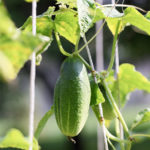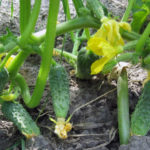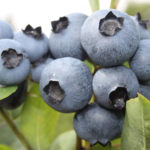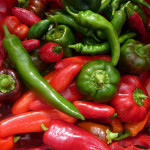Apple variety Nastenka
Nastenka is a late winter apple tree bred at the Sverdlovsk experimental gardening station through pollination of Anis purple with a pollen mixture of 2 varieties - Samotsvet and Raduga. The authorship belongs to L.A. Kotov. The variety is aimed at passing the State and production tests, and is distributed in the Urals. First of all, it is recommended for cultivation in the arid climate of the southern part of the Urals, since it is strongly affected by scab during prolonged rainy weather.
Trees are tall, the crown has a back-pyramidal shape. Skeletal branches are straight, rarely located on the trunk and depart from it at an angle of 40 to 65 degrees. The bark on the trunk and branches is a peeling type, brown in color. Ringed fruiting (simple and complex ringlets) predominates.

Shoots are straight, in cross-section - rounded, of medium thickness, fleecy, colored brown. The leaves are medium-sized, oval, dark green in color, with short-pointed ends, the edges of the leaves - with small-crenate or serrate-crenate serration. The leaf blade has a "pebbled" surface, flat, matte, rounded at the base. The petioles are medium. Stipules are small in size, saber-shaped in shape.
The fruits of the Nastenka apple tree are of medium and large size (one apple weighs in the range from 100 to 180 g, the average weight of an apple is 140 - 160 g), one-dimensional, regular round-conical or flat-round shape. The surface of the skin is smooth, dry, covered with a strong waxy bloom. According to the main color, the fruits are colored greenish-yellow, the integumentary color is expressed in the form of a continuous intense blurry-striped brick-red blush. The stalks are very short in length. Small funnel with the addition of light bronze rusting. The saucer is of medium depth, smooth, rather narrow in shape. Closed cup. The heart is small, bulbous. Seed chambers are closed or with fine slits. The sub-cup tube is very short and conical in shape.
The pulp is greenish, in fully ripe fruits it is yellowish (closer to cream), medium density, juicy, with a good sweet and sour taste. By chemical composition, the fruits contain: dry soluble substances (13.5%, the limit value is 15.2%), the sum of sugars (10.7%, the limit is 12.2%), titratable acids (0.85%, the limit - 1.34%), ascorbic acid (18.9 mg / 100 g, limit - 25.4 mg / 100 g), P-active substances / catechins (239.7 mg / 100 g, limit - 298.8 mg / 100 g). Nastenka belongs to the table varieties.
Removable ripeness occurs in mid-September. The potability of the variety is quite high: with proper storage, the fruits retain their freshness until the end of February - early March.
The early maturity of the apple tree is average: the trees enter the fruiting season in the 5th - 6th year. The yield is high, but the variety has a tendency to periodicity in fruiting. Winter hardiness of trees is quite high. Scab resistance is weak (affected in rainy years).
The main advantages of Nastenka's apple tree include: a very large size of fruits, a high level of productivity and winter hardiness.
Among the main disadvantages: susceptibility to scab in wet years, periodic fruiting.
It is also worth noting the conflicting opinions of the Ural gardeners about the taste of fruits: for some experienced experts, Nastenka's taste seems too simple, while others highly appreciate this variety. From this we can conclude that both the growing conditions and the level of agricultural technology have an important effect on the taste of the variety.








